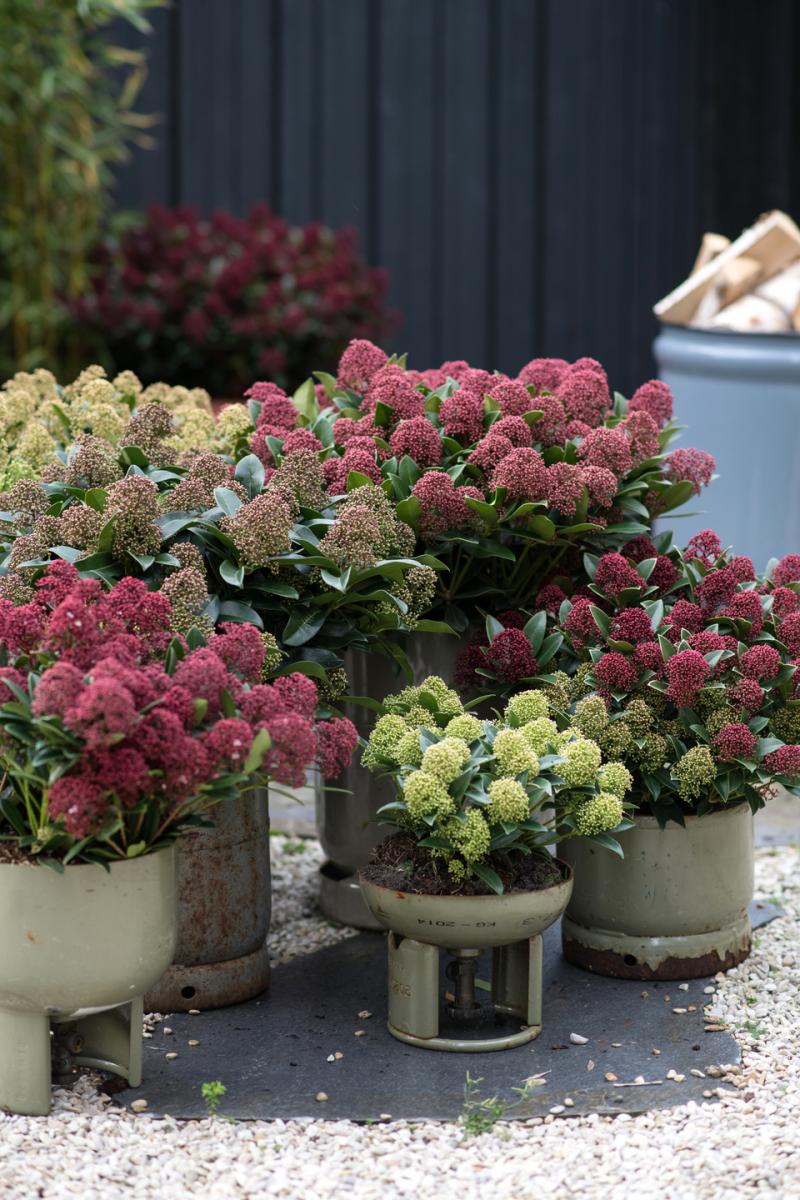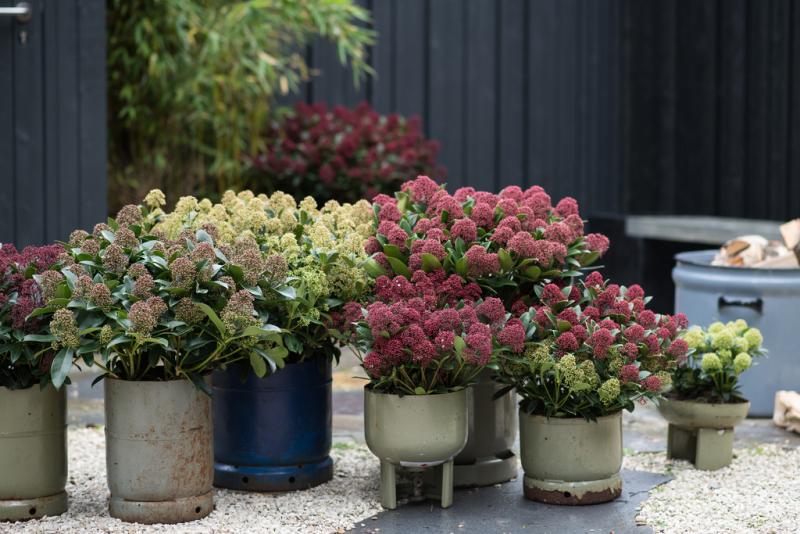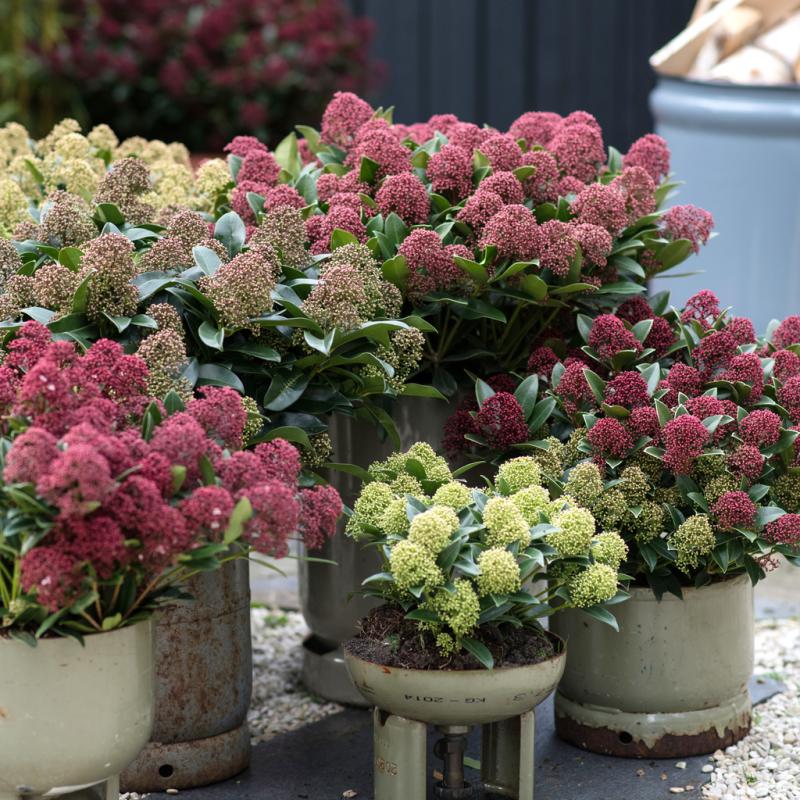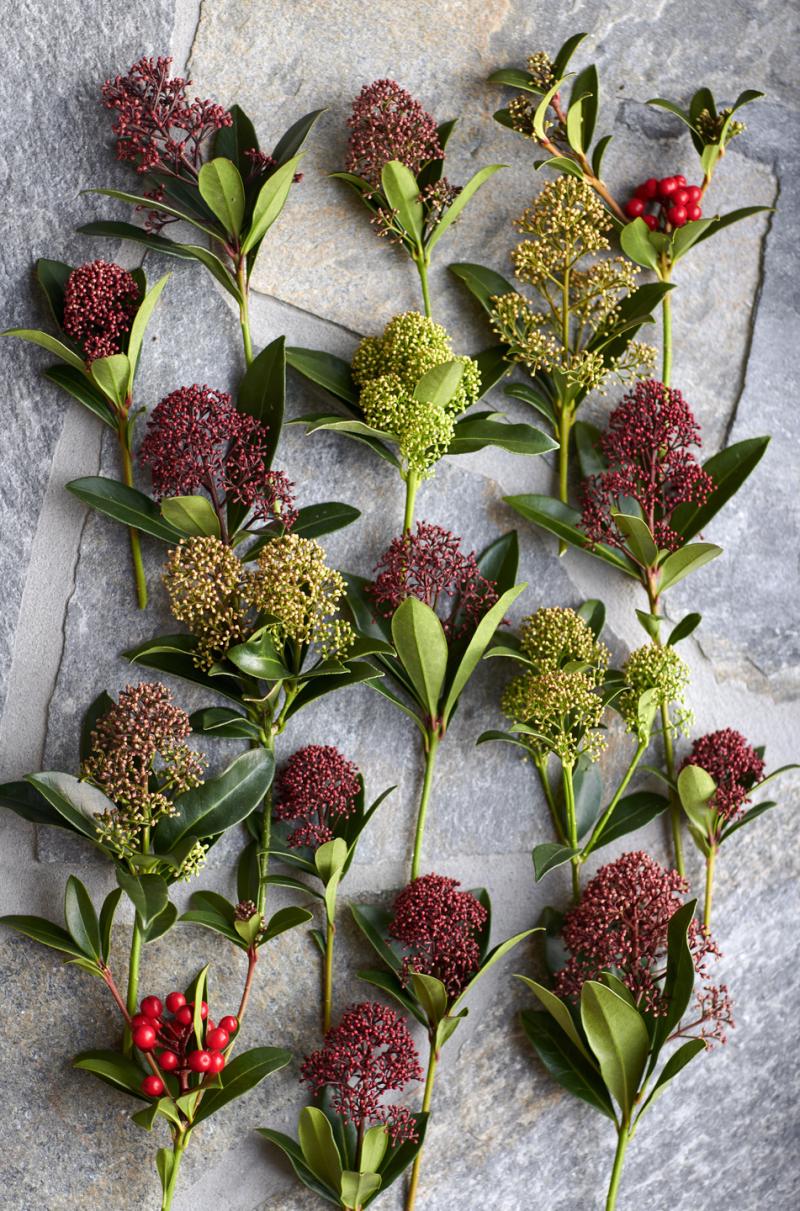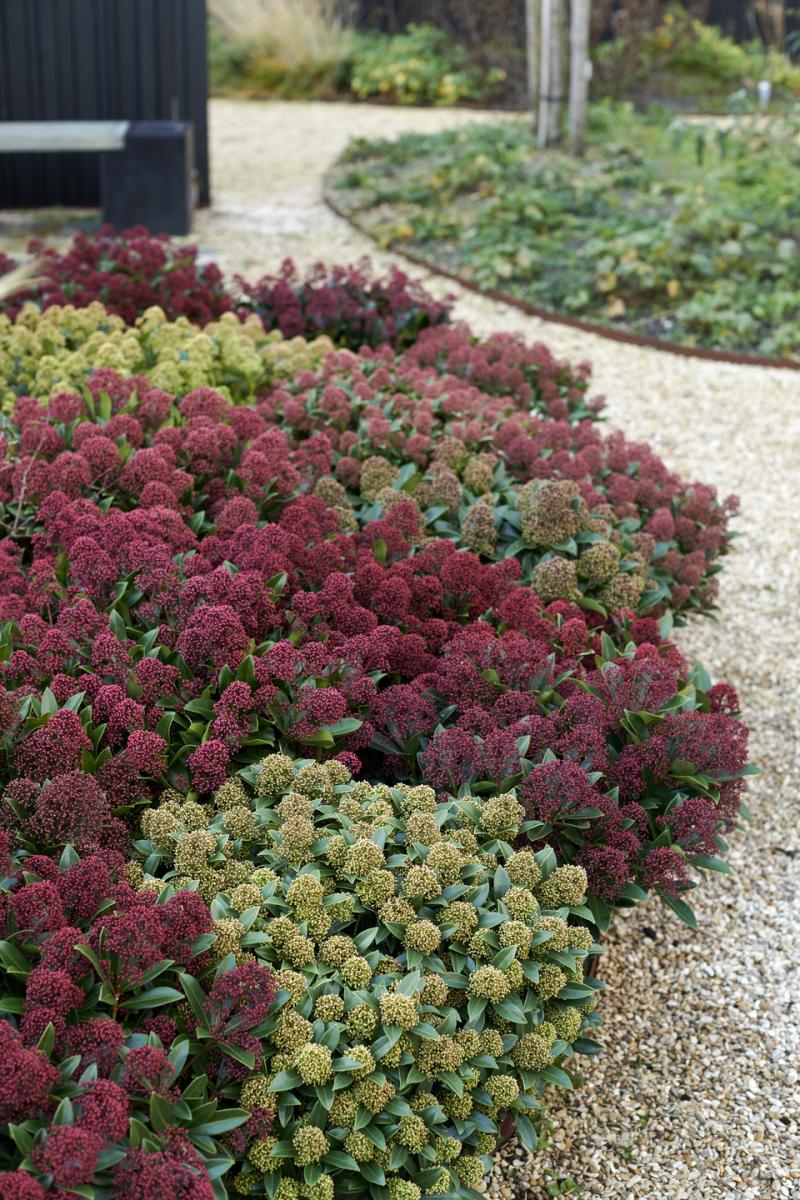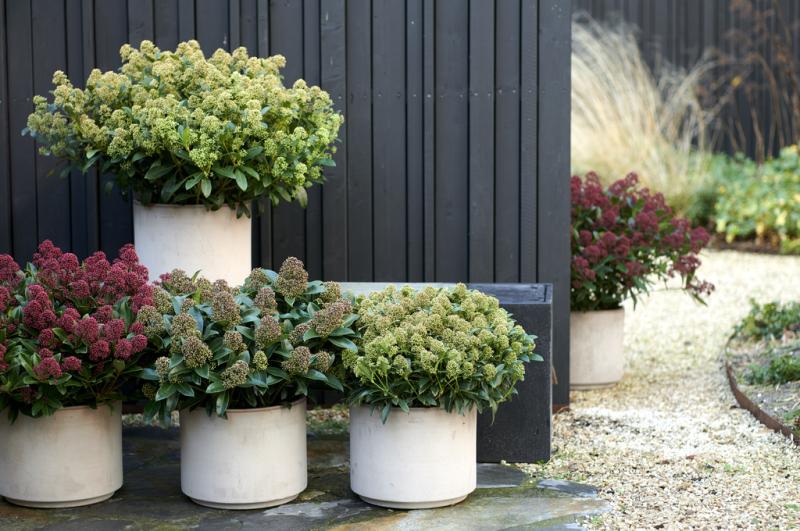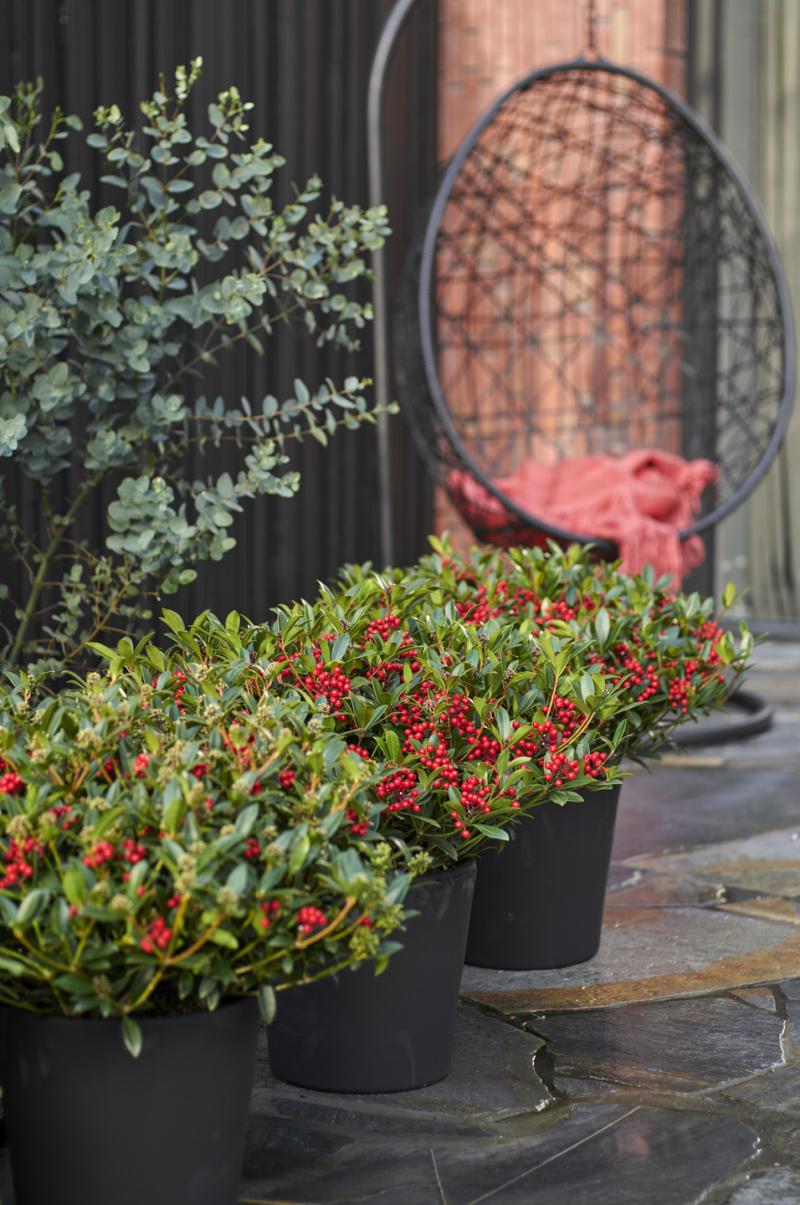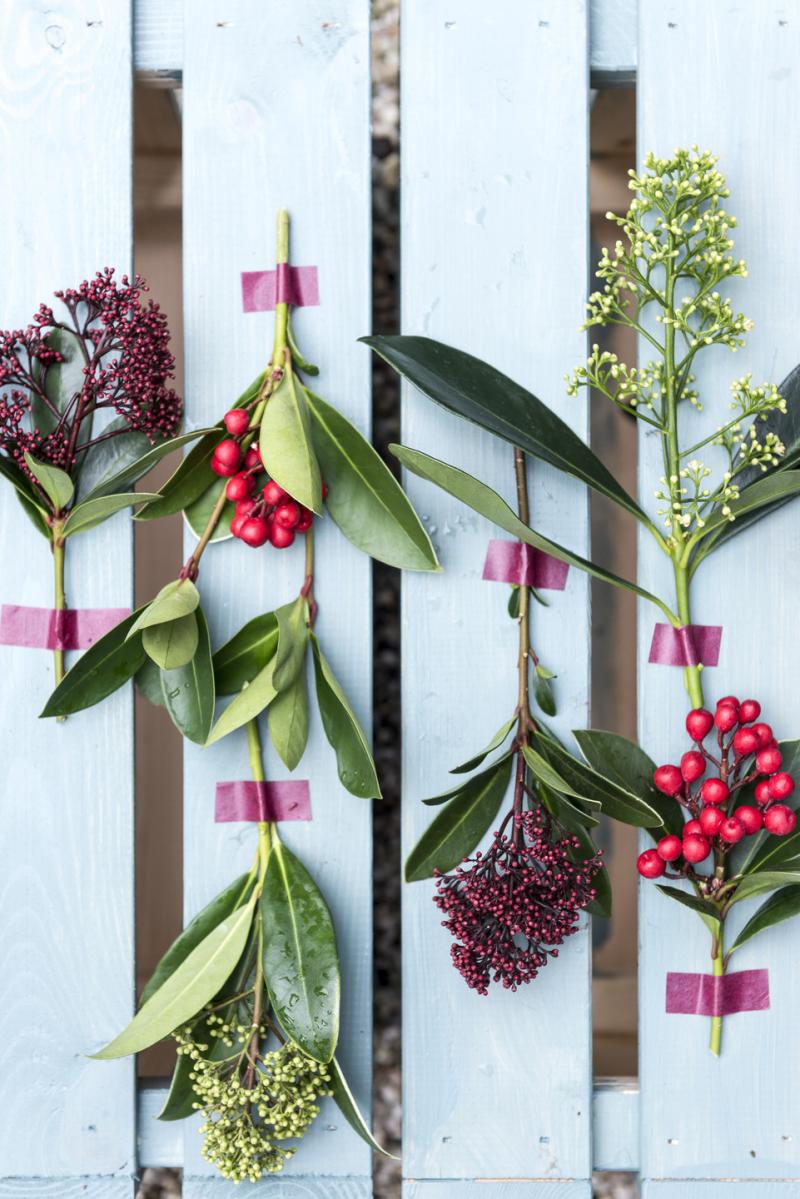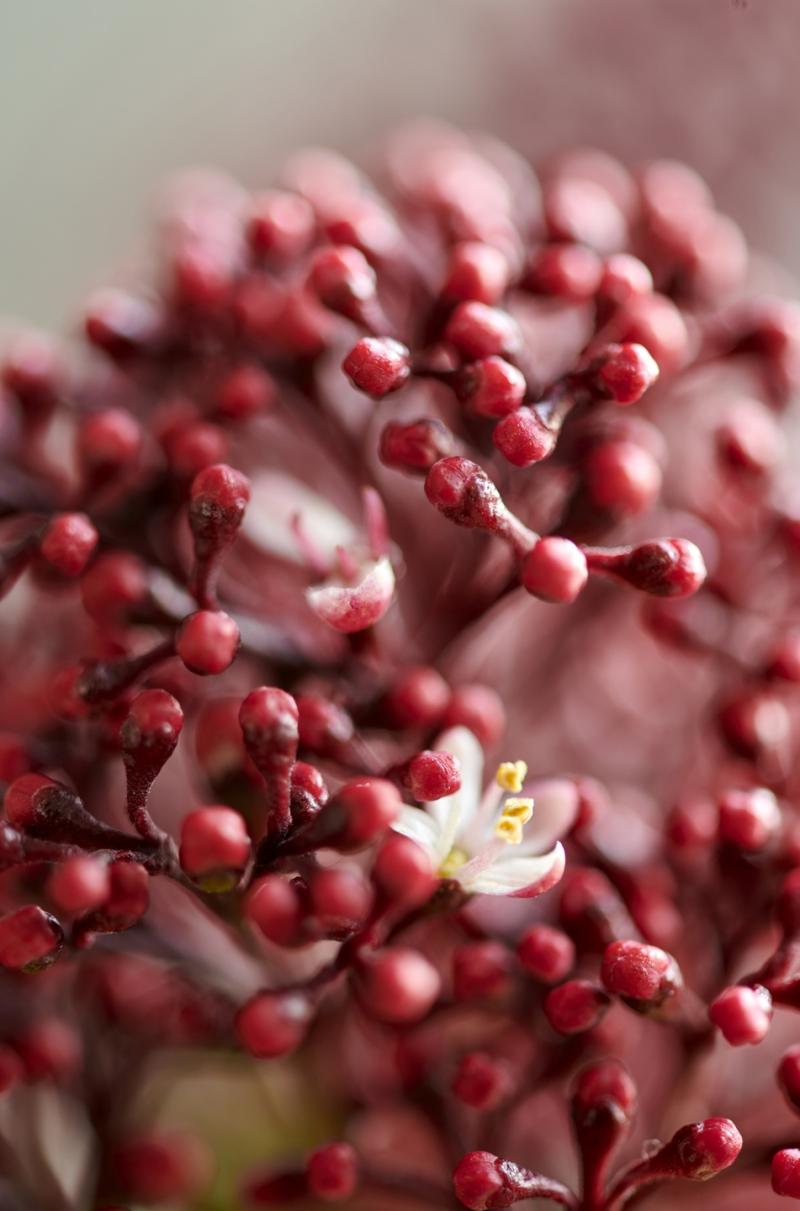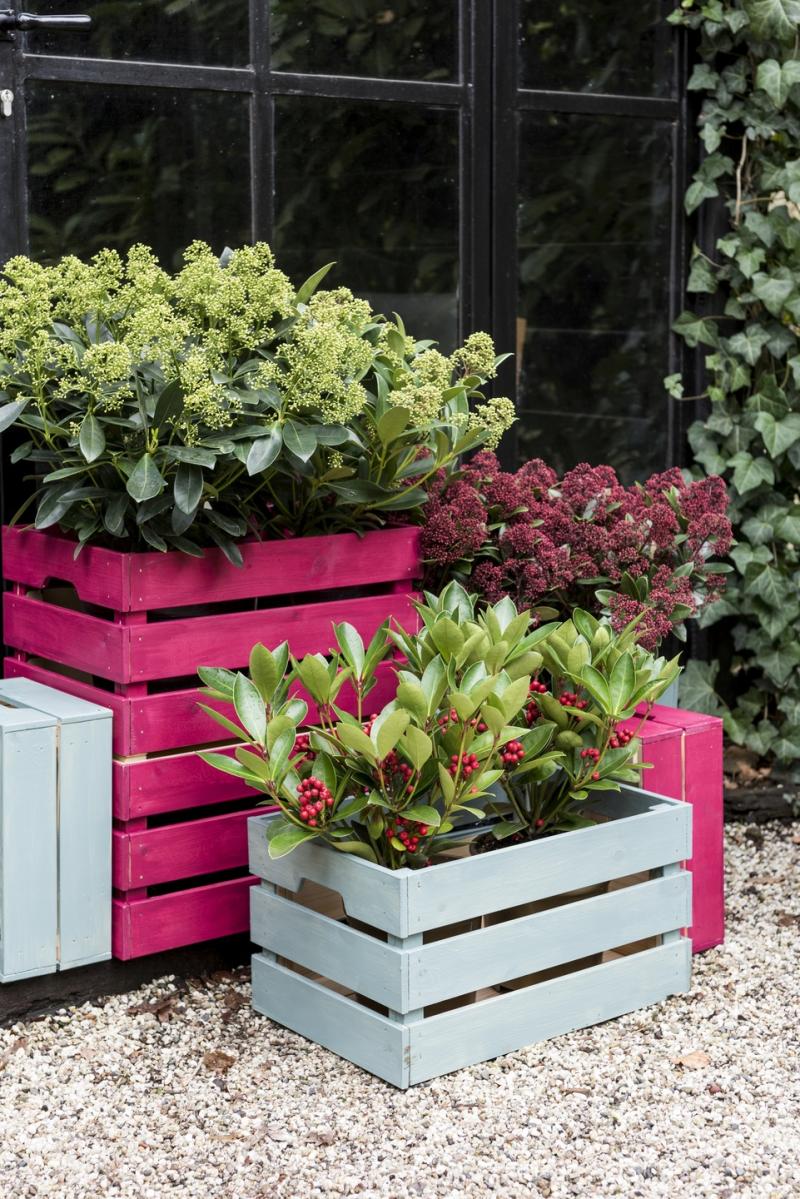Garden Plant of the Month November: Skimmia
Skimmia, the four seasons wonder
This shrub (officially called Skimmia japonica) constantly manifests itself in new ways throughout the year. In November the plant displays the buds of its sturdy, attractive flower spikes. The colour and the buds continue to look beautiful all winter long. In April/May the buds open and Skimmia flowers with white/pink flowers with a strong scent: bees love them. The first new buds appear at the end of August. And one constant is the leathery leaves that remain beautifully green throughout the year.
Range
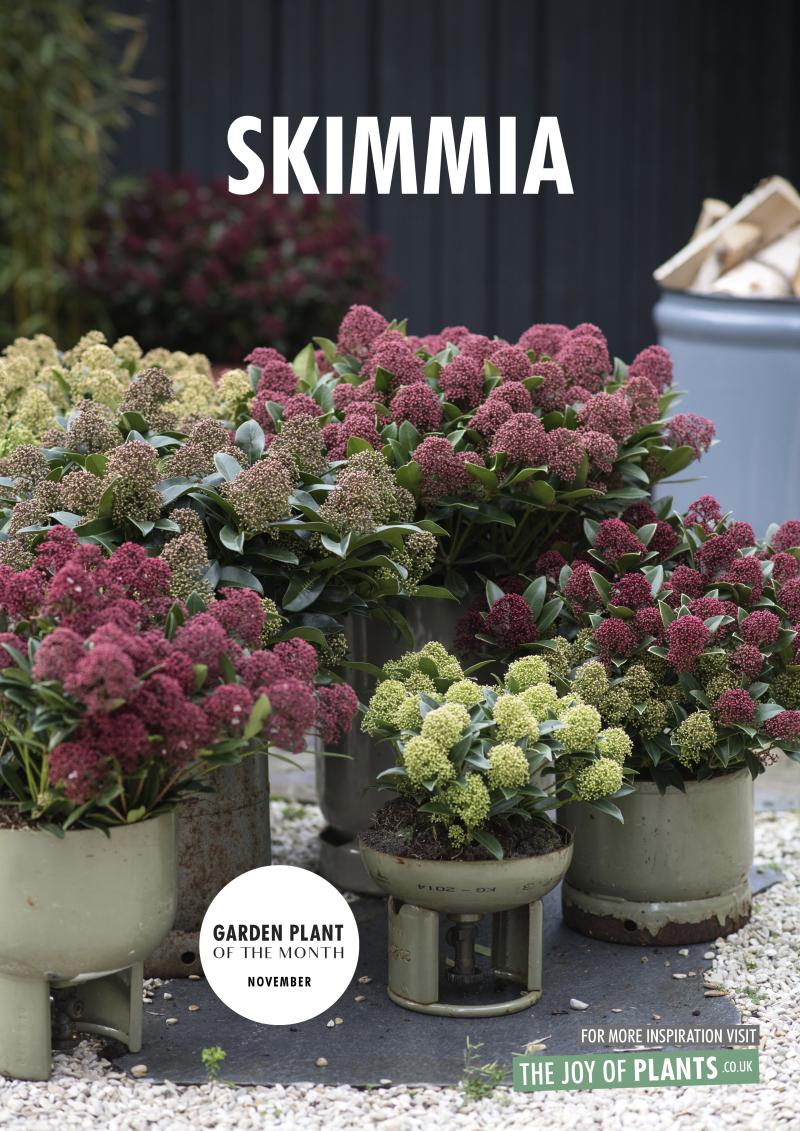
Skimmia trivia
• The first Skimmia came to Europe in 1838 and ended up in the greenhouses of Kew Gardens.
• The Latin name was created in 1784 from 'Miyama shikimi’, the Japanese name for Skimmia.
• Skimmia japonica 'Pabella’ is a cousin of Skimmia japonica 'Rubella’, which is known for its beautiful sprays of flowers.
• For the plant to thrive in your garden, you need to place a male Skimmia alongside a couple of females to ensure pollination. The male plant can be identified by its shape, it flowers slightly more vigorously, and the flowers have pistils.
Origin
Skimmia is a member of the rue family (Rutaceae), which also includes citrus trees. The family resemblance is clear from the leaves: if you crush them, it releases a citrus fragrance. In the wild Skimmia grows in the forests of China and other parts of Asia such as the Himalayas. However, the version in your garden was most probably grown in a greenhouse.
What to look for when buying
• Check the balance between pot size, the number of stems per pot, the shape of the plant and the number of buds on the plant.
• Skimmia is only offered with coloured buds in November. These buds will have formed in August, and will retain their marvellous colour until they flower in April. There’s therefore no need to check the ripeness in November.
Sales and display tips
Skimmia is a perfect transition plant between all the red and orange of the early autumn and the approaching December festivities. Highlighted alongside other autumn successes such as heather and ivy, and supplement the display with some home accessories that match the season, like lanterns, a pair of wellies, and a rake. Because Skimmia is a popular front door plant (one either side of the door), it’s a good idea to display the plants symmetrically, already placed in an attractive pot or zinc bucket.
Care tips for customers
• Skimmia prefers to be in the shade where the berries will develop best.
• The plant prefers a lightly acidic soil such as rhododendron soil.
• If the leaves turn yellow the soil is not acidic enough.
• Skimmia does not like having wet roots, and therefore likes to be planted near trees that draw a lot of moisture out of the soil. In pots the water must be able to drain away.
• It’s better not to cut branches off the plant since that will harm the next flowering.
• Skimmia is moderately hardy, and only needs to be wrapped in fleece or bubble wrap during hard frosts.
Downloadable POS material:

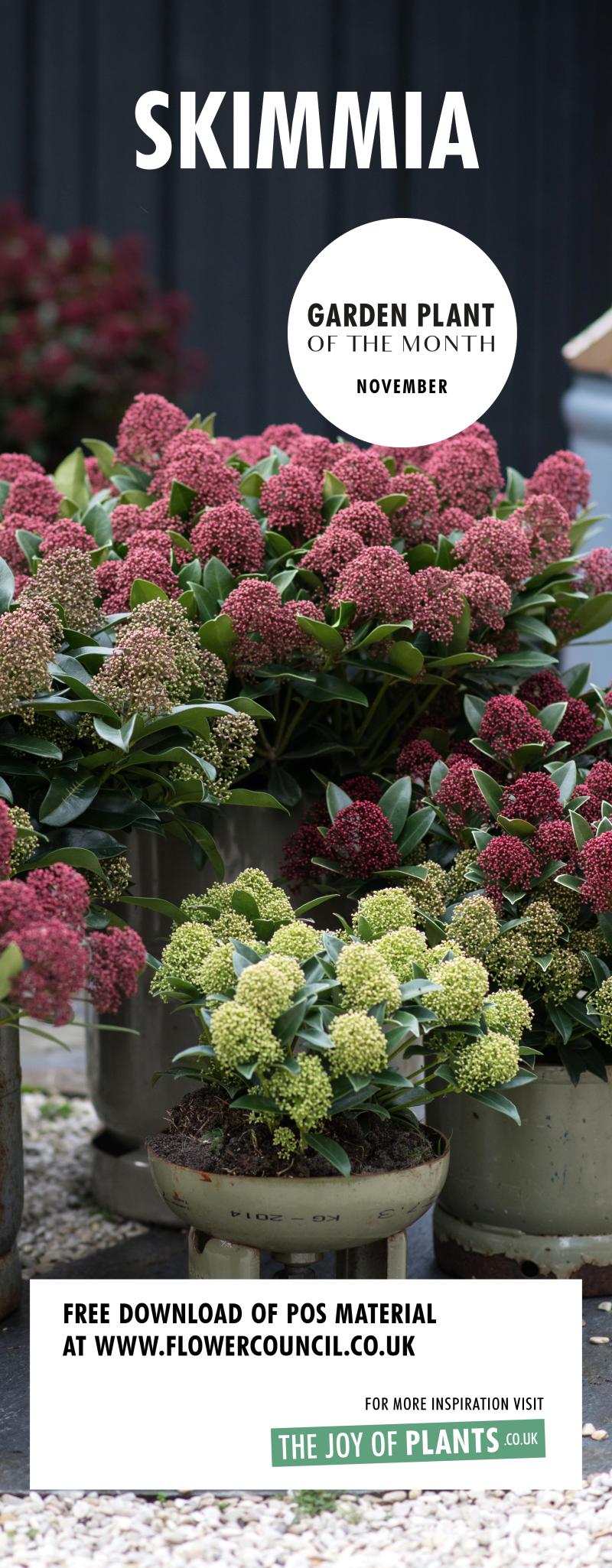
- Banner Skimmia
Garden Plant of the Month
Skimmia is the Garden Plant for November 2018. The ‘Garden Plant of the Month’ is an initiative from the Flower Council of Holland. Every month the Flower Council works with representatives of the floriculture sector to choose a plant with an amazing look or unusual characteristics to put in the spotlight. Sometimes it will be a green star that’s highlighted, and sometimes an undiscovered treasure that deserves to be better known and merits a place in the garden, on the patio or on the balcony. Because everyone is happier with more plants.
More information:
Facebook: thejoyofplants
Twitter: @ thejoyofplants
Thejoyofplants.co.uk
Thejoyofplants.co.uk is an initiative by the Flower Council of Holland to enable consumers to discover that you feel better with plants around you.

